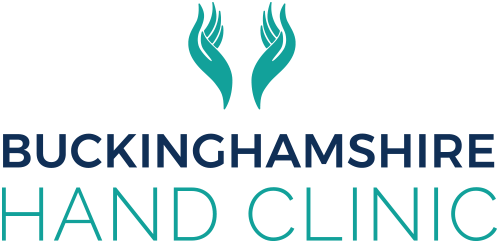The field of hand and wrist surgery has developed into a specialty of its own with tremendous progress in the understanding of the anatomy and biomechanics. There has also been a significant advance in our understanding of the pathology of conditions affecting the hand and wrist.
Movements of the hand and wrist are integral to many activities of daily living, work, hobbies and sports. The functional activities of tendons, muscles, nerves, blood vessels and the joints are intricately connected and finely balanced. These structures are covered by highly specialised skin which not only provides protection but also is crucial to grip and sensory perception. Any change in one of the structures is therefore likely to affect the hand as a whole.
Ganglia and Cysts
A ganglion is the commonest (nearly two-thirds) of all ‘lumps and bumps’ seen in the hand. They are commonly seen between 20-40 years of age. They are benign (not cancerous). They are filled with gel-like fluid and are also referred to as cysts or ganglion cysts.
The common locations in the hand are:
1. Back of the wrist (Dorsal wrist ganglion)
2. Front (palm) of the wrist (Volar wrist ganglion)
3. Base of the finger on the palmar aspect (pearl ganglion or seed ganglion)
4. Back of the finger near the nail (Mucous cyst)
Wrist ganglia: Why these occur is not entirely clear. They often cause discomfort but functional limitation is uncommon. Ganglia often vary in size with time. Sometimes they can interfere with activity depending on their size and the functional demands on the wrist (occupation and hobbies).
‘Pearl’ (‘seed’) ganglia: These arise from the flexor sheath and are located near the base of the finger. Pearl ganglia can be painful during gripping activities due to their location. They commonly present as a hard lump that is better felt than seen.
Mucous cysts: These are typically located near the distal joint in the finger and can be associated with osteoarthritis in the underlying joint. The joint may not be symptomatic at all. They can cause a linear furrow in the nail due to pressure effect on the cells that form the nail. They sometimes burst and discharge fluid spontaneously. Although there is a theoretical risk of joint infection (as the cyst communicates with the underlying joint), the real risk is very, very small. Surgical excision is the best option when they are painful and can be carried out under local anaesthesia by numbing the finger.
Investigations: The diagnosis is almost always made on clinical examination. Sometimes an ultrasound scan or a MRI scan is used to confirm the diagnosis and assess the extent and characteristics.
Treatment: If the ganglion is not painful and is not interfering with activities, nothing needs to be done. Wrist ganglia are by and large treated non-operatively. Surgery should be considered as the last resort for painful ganglia interfering with function. Recurrence rate is high for volar wrist ganglions and surgery in this area carries a higher risk of injury to surrounding vital structures. Hence it is very uncommon to operate on volar wrist ganglia.
Aspiration +/- steroid injection: Dorsal wrist ganglia can be aspirated to improve symptoms. Aspiration is done in the clinic. Recurrence is common after aspiration. There is no strong evidence to suggest that a concomitant steroid injection would reduce the risk of recurrence.
In general, volar wrist ganglia carry a high risk of injury to surrounding nerves and blood vessels and aspiration is not attempted.
A pearl ganglion can be punctured with a needle and the contents dispersed with manual pressure under local anaesthesia but this procedure is not always successful.
Surgery for ganglions and cysts
Dorsal wrist ganglion: Excision of dorsal wrist ganglion is performed as a day-case under general or regional anaesthesia. The ganglion is traced down to its origin and removed completely. A bulky bandage is applied. Finger movements are encouraged straightaway and the hand can be used for light activities.
Sutures are trimmed after 12-14 days, usually at the time of the review appointment. Most patients will be able to return to deskwork within a week but heavy manual work should be avoided for around 3 weeks. The risk of recurrence is around 30-40%.
Seed (pearl) ganglion: Excision can be performed under local anaesthesia or general anaesthetic. Sutures are removed after 10-12 days. The scar can be tender for a few weeks and gripping may cause scar discomfort.
Mucous cyst: Excision of the cyst is carried out under local anaesthesia. A fusion procedure to stiffen and stabilise it can be carried out at the same time if the joint is very arthritic and painful. It is only occasionally needed. The decision to fuse the joint will be made well before the procedure is performed and the pros and cons will be discussed in the outpatient clinic. If the skin over a tense cyst is very thin, it may take slightly longer for the wound to settle down. Around 1 in 5 of the mucous cysts recur after surgery but there is no recurrence risk if the joint is fused.
Non-absorbable sutures, if used, are removed after 10-12 days. Hand therapy may be necessary to aid recovery.
